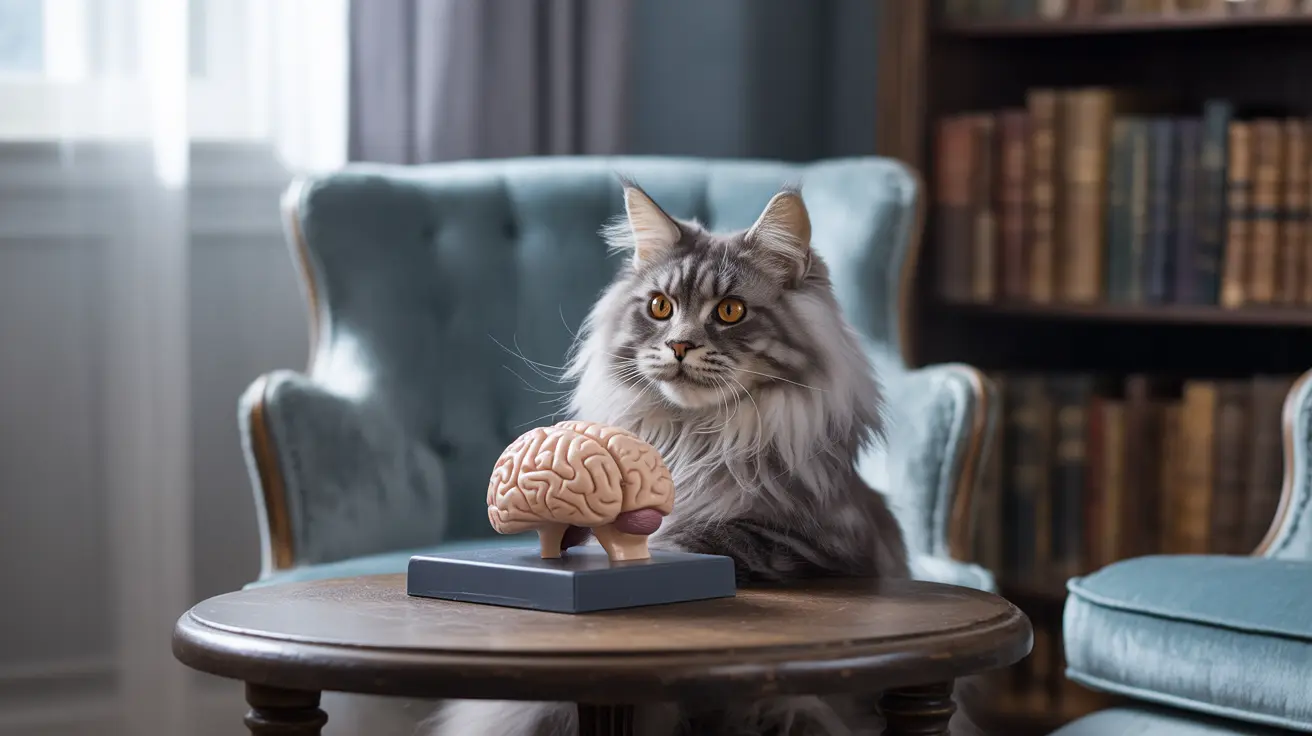The fascinating world of cat brain anatomy reveals how our feline companions process information, control movement, and experience the world around them. As complex mammals, cats possess remarkably organized brains that share many similarities with human neural architecture while maintaining distinct features that make them uniquely suited to their predatory nature and behavioral patterns.
In this comprehensive guide, we'll explore the intricate structures and functions of the cat brain, helping you understand how your pet's neural system supports everything from their incredible agility to their ability to form strong bonds with their human families.
Major Components of the Cat Brain
The cat brain consists of three primary regions, each serving distinct yet interconnected functions:
The Cerebrum: Command Center
The cerebrum, the largest part of the cat's brain, handles conscious processing and decision-making. It's divided into two hemispheres connected by the corpus callosum, which enables coordination between the left and right sides. This structure allows cats to process complex information and make decisions about their environment.
The Cerebellum: Movement Master
Located at the back of the brain, the cerebellum is crucial for the cat's legendary agility and balance. This region coordinates muscle movements, maintains posture, and ensures smooth execution of complex physical actions, from precise hunting pounces to graceful landings.
The Brainstem: Life Support System
The brainstem connects the brain to the spinal cord and controls vital functions like breathing, heart rate, and blood pressure. It includes the medulla oblongata and pons, which regulate unconscious processes essential for survival.
Sensory Processing Systems
Visual Processing
Cats have highly developed visual processing centers, with dense neuronal packing in their primary visual cortex. This specialized structure enables their exceptional night vision and ability to detect even slight movements, making them effective hunters in low-light conditions.
Olfactory System
The olfactory bulbs, located beneath the frontal lobe, are proportionally larger in cats than humans. This enhanced smell-processing capability allows cats to interpret complex scent information crucial for territory marking, social communication, and food detection.
Memory and Emotion Centers
The feline brain contains sophisticated structures for processing emotions and forming memories:
- The hippocampus manages memory formation and spatial navigation
- The amygdala processes emotional responses and fear
- The caudate nucleus plays a vital role in learning and reward-based behaviors
Protective Features
The cat's brain is protected by several layers of defense:
- Three layers of meninges (protective membranes)
- Cerebrospinal fluid that cushions the brain
- The skull, providing physical protection
- Blood-brain barrier, protecting against harmful substances
Frequently Asked Questions
What are the main parts of a cat's brain and their functions?
The cat brain has three main parts: the cerebrum (conscious thinking and decision-making), cerebellum (movement and balance coordination), and brainstem (vital functions like breathing and heart rate).
How similar is a cat's brain anatomy to the human brain?
Cats share many structural similarities with human brains, including folded cortical surfaces and analogous major regions. However, cats have proportionally larger olfactory areas and smaller frontal lobes compared to humans.
How does the cat's cerebellum contribute to their agility and balance?
The cerebellum coordinates muscle movements, maintains balance, and fine-tunes motor skills, enabling cats to perform precise movements and maintain their characteristic agility and grace.
What role do the cat's olfactory bulbs play in their behavior?
The olfactory bulbs process scent information, enabling cats to mark territory, identify other animals, detect prey, and communicate through pheromones.
How does the cat's brain process sensory information from sight, sound, and smell?
The cat's brain processes sensory information through specialized regions: visual information through the visual cortex, auditory signals through the auditory cortex, and scent through the olfactory system. These inputs are integrated to create a comprehensive understanding of their environment.
Understanding cat brain anatomy helps us appreciate the complexity of our feline companions and provides insights into their behavior, abilities, and needs. This knowledge can lead to better care and stronger bonds between cats and their human caregivers.






